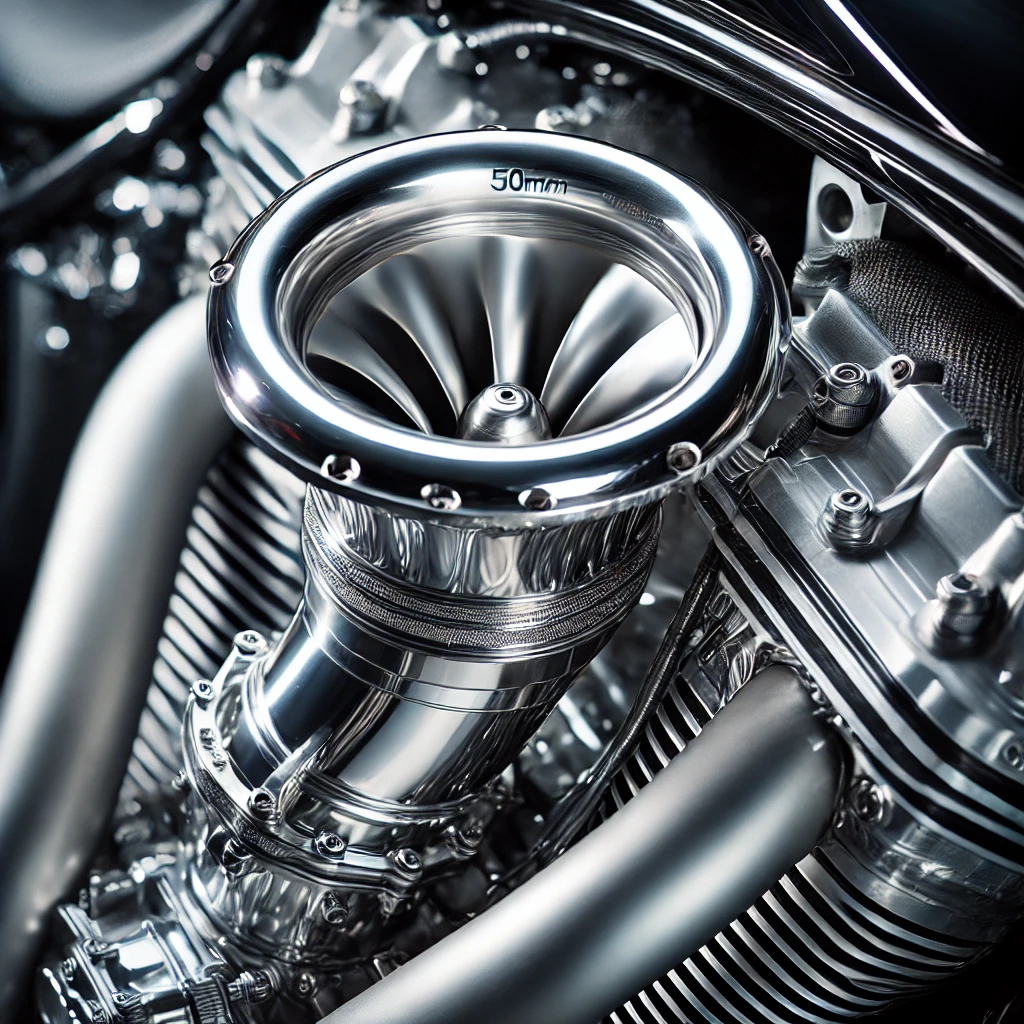Introduction to the Curved 50mm Velocity Stack
In the realm of automotive and motorcycle engineering, the pursuit of optimal air intake solutions has led to innovative developments, one of which is the Curved 50mm Velocity Stack. This component, although small, plays a pivotal role in enhancing engine performance by optimizing air flow dynamics. The curved design not only adds a visual appeal but significantly impacts the efficiency and functionality of an engine’s air intake system.
What Exactly is a Curved 50mm Velocity Stack?
A Curved 50mm Velocity Stack is an air intake funnel that features a curved entry with a diameter of 50mm. This design is tailored to streamline the flow of air into the engine’s intake manifold, reducing turbulence and allowing a smooth transition of air at higher velocities. Primarily made from materials like aluminum or plastic, these velocity stacks are engineered to fit snugly onto the intake system, providing a seamless path for air entering the engine.
How Does a Curved 50mm Velocity Stack Work?
The principle behind a Curved 50mm Velocity Stack is based on fluid dynamics. By curving the entrance of the stack, the air is directed in a laminar flow pattern towards the intake valves. This reduces air resistance and minimizes eddies or turbulence, which are common in abrupt or sharp intakes. The curved design helps maintain a higher velocity of air flow, ensuring that a greater volume of air reaches the combustion chamber in a more controlled manner.
Key Advantages of Using a Curved 50mm Velocity Stack
Utilizing a Curved 50mm Velocity Stack offers several benefits:
Enhanced Engine Performance
One of the primary benefits of implementing a Curved 50mm Velocity Stack is the significant enhancement in engine performance. By optimizing the flow of air into the intake system, these stacks allow for a smoother and more direct air path to the combustion chamber. This reduction in air turbulence facilitates a more efficient mix of air and fuel, which is crucial for combustion. The result is a noticeable increase in engine output, including improved horsepower and torque.
Improved Throttle Response
The design of the Curved 50mm Velocity Stack helps in achieving a quicker throttle response. This is particularly beneficial in performance settings where rapid acceleration is crucial, such as in racing or high-performance driving. The velocity stack enables air to be drawn into the engine more quickly when the throttle is opened, reducing lag and allowing for faster acceleration.
Fuel Efficiency
Although primarily designed for performance, these velocity stacks can also contribute to improved fuel efficiency under certain conditions. By facilitating a more efficient air intake process, the engine can achieve a more effective combustion cycle. This means that the engine might require less fuel to produce the same amount of power, especially at higher RPMs where traditional setups might struggle with air flow inefficiency.
Aesthetic and Acoustic Enhancements
For many automotive enthusiasts, the visual and acoustic enhancements provided by a Curved 50mm Velocity Stack are equally important. These components often feature a polished, metallic finish that can significantly enhance the visual appeal of an engine bay. Additionally, they can alter the sound of the air intake process, producing a more distinct, aggressive sound that many find appealing in performance vehicles.
Main Applications of a Curved 50mm Velocity Stack
Velocity stacks are not limited to a single type of vehicle or engine. They are commonly used in:
Performance Motorcycles
Motorcycles, particularly those designed for speed and agility, greatly benefit from the installation of a Curved 50mm Velocity Stack. The improved air intake efficiency directly translates to better performance on the track or on the street, where responsiveness and power are key.
Racing Cars
In the world of auto racing, every component that can provide an edge is crucial, and velocity stacks are no exception. Racing vehicles often use these stacks not only for the performance benefits but also for the fine-tuning capabilities they offer in adjusting air intake properties to match specific racing conditions and engine setups.
Custom Automotive Projects
Car enthusiasts who engage in custom builds or modifications frequently turn to velocity stacks as a means to both enhance engine performance and achieve a certain aesthetic within their projects. The Curved 50mm Velocity Stack is particularly popular among those looking to optimize older engines or create a distinctive setup that stands out both in performance and appearance.
Aviation and Marine Engines
Beyond automotive applications, Curved 50mm Velocity Stacks are also used in aviation and marine contexts where precise control over air intake is necessary. In these environments, the benefits of improved air flow can translate directly to better engine reliability and performance, crucial in scenarios demanding high efficiency and safety.
Step-by-Step Guide on Installing a Curved 50mm Velocity Stack
Installation Procedure
- Preparation: Ensure the engine is cool and the battery is disconnected.
- Removal of Existing Components: Take out the current air intake system components.
- Fitting the Velocity Stack: Attach the stack to the intake manifold. Ensure a limited and protected fit to prevent any air leaks.
- Securing Components: Tighten all fittings and clamps to secure the stack in place.
- Testing: Reconnect the battery and start the engine to test the new setup. Listen for any unusual sounds and check for stability.
Maintenance Care for Velocity Stacks
Maintaining a Curved 50mm Velocity Stack involves regular checks for debris and potential air blockages. Cleaning should be performed with appropriate solvents and tools to avoid damaging the stack’s material. Ensuring that the stack remains securely attached and leak-free is also crucial for maintaining optimal performance.
Conclusion: The Significance of Curved 50mm Velocity Stacks in Modern Engineering
The Curved 50mm Velocity Stack is more than just a component; it is a testament to the sophisticated engineering practices aimed at enhancing vehicular performance. Its role in facilitating smoother and more efficient air intake makes it an invaluable addition to any high-performance engine setup. As automotive technology evolves, the principles of effective air management exemplified by such innovations will continue to drive the industry forward, promising even greater achievements in engine performance and efficiency.


